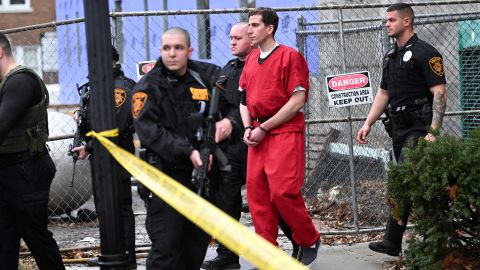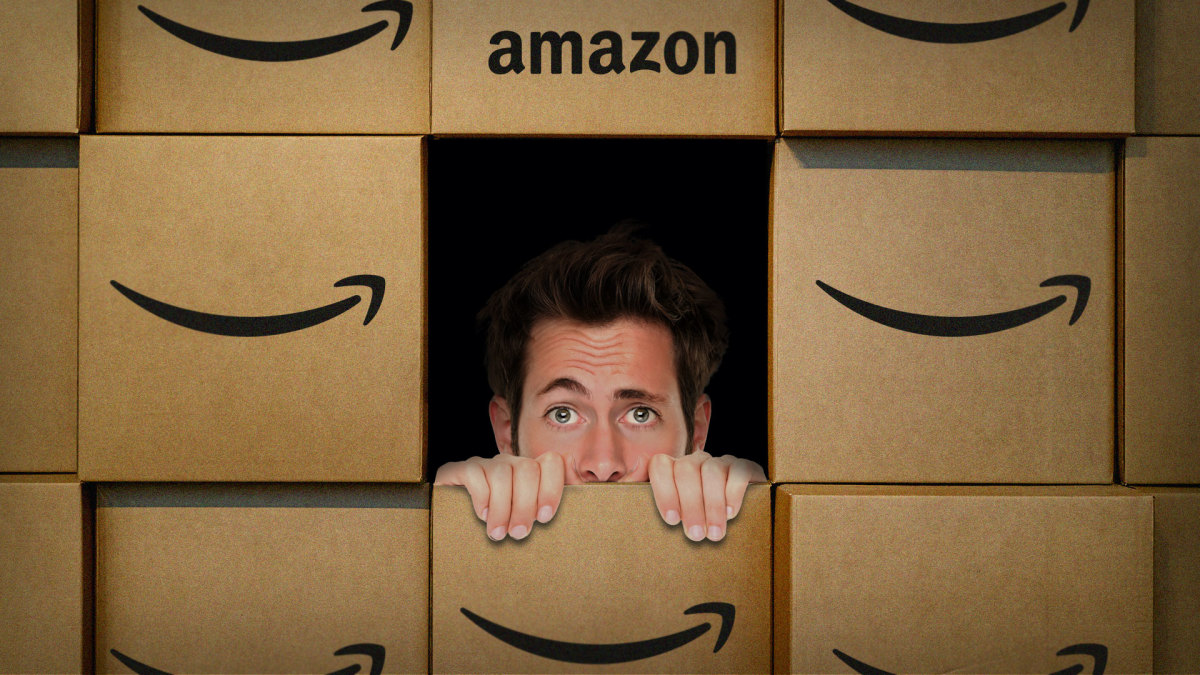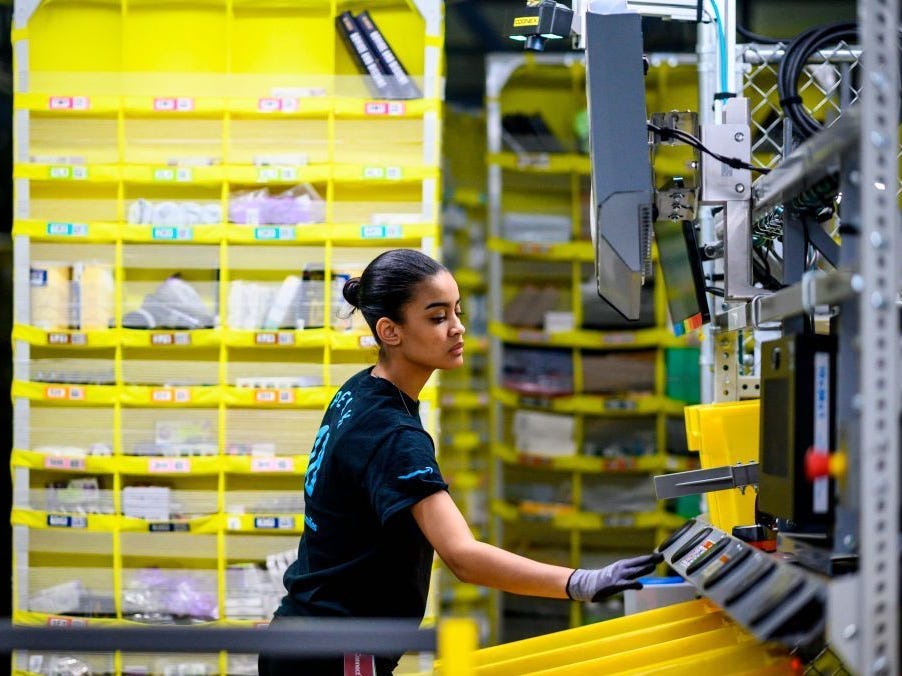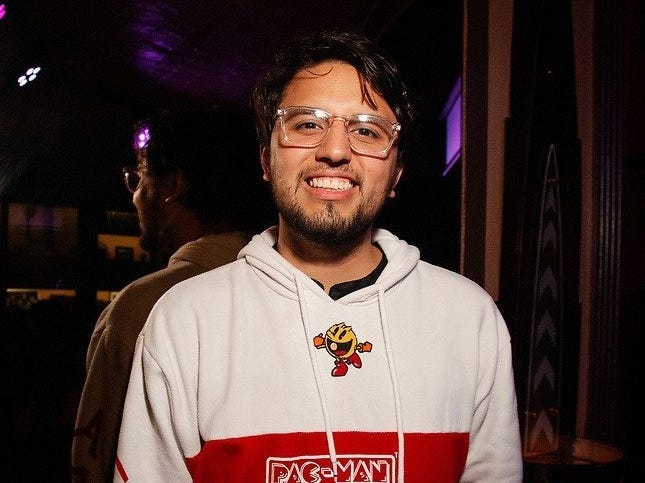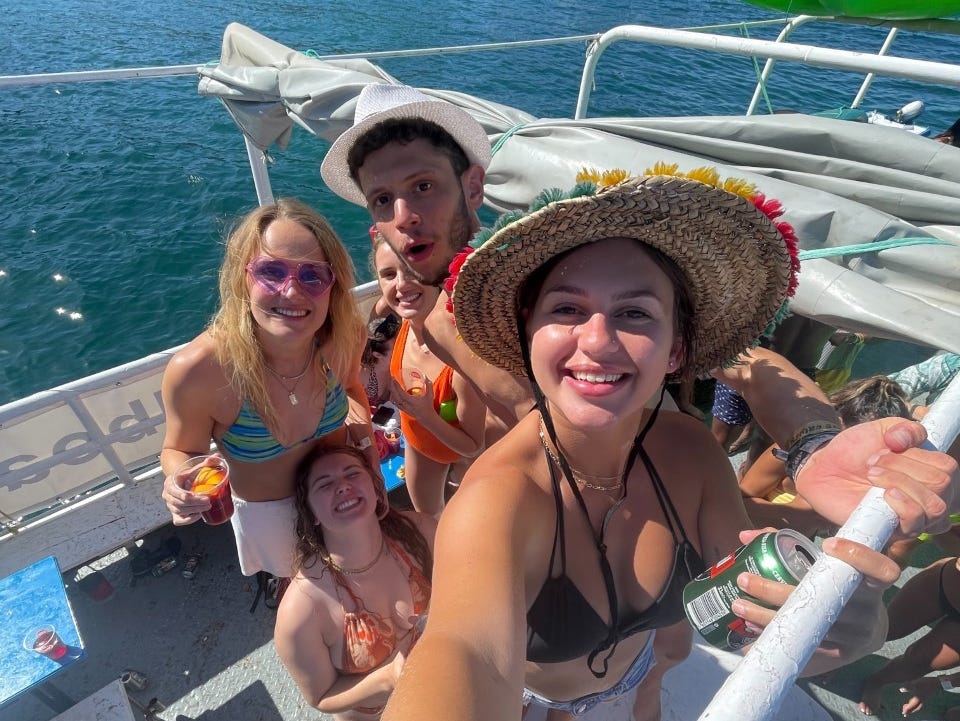Business Insider
Taylor Futch, in the foreground.
Courtesy of Taylor Futch
Taylor Futch works at party hostels and does everything from leading pub crawls to manning the desk.
While she loves the hostel life, it comes with challenges like toxic bosses and cleaning up vomit.
She documents her daily life and travels as a hostel worker on TikTok for her 47,000 followers.
This as-told-to essay is based on a conversation with Taylor Futch, a 25-year-old hostel worker from Ocala, Florida. It has been edited for length and clarity.
My life is a series of hard goodbyes, but it’s also a series of life-changing hellos.
After I graduated from college, my work consisted of social-media-marketing gigs on Upwork. In January, while I was vacationing in Costa Rica, I met a girl who travels all over the world working in hostels and picking up odd jobs along the way.
I’d always wanted to do something like that. I come from a small town in Florida where everyone my age seems to be getting married and having kids. My family knows that’s not in the cards for me right now, and it probably won’t be for at least another five years or so. Listening to the girl share all her adventures was the push I needed to go for it.
The day after meeting her, I went online and came across a job posting on Worldpackers for a monthlong stint at the Cabana Copa Urban Jungle Hostel in Rio de Janeiro. I sent an email describing my interest in the job, and three weeks later — armed with a 90-day tourist visa that I applied for and was granted online — I boarded a plane from Florida and arrived during Carnival. Under the terms of my tourist visa, I couldn’t be paid for my work. Instead, I worked in exchange for meals and lodging in a shared room.
It didn’t take long to realize I loved party–hostel life
Party hostels are set up like regular hostels, but they’re geared toward backpackers who want to experience the nightlife in a place, as well as the cultural and historical sites.
This lifestyle allows me to save money since I always live and often eat and drink for free. I get to meet a variety of fascinating people who also love to travel, immerse myself in a culture in a way that a traditional vacation doesn’t allow, and pick up snippets of different languages. By creating social-media content for my 47,000 TikTok followers as part of my hostel work, I’m also able to build my professional portfolio for social-media management.
When I was stuck at home and unable to travel during the early days of the COVID-19 pandemic, I downloaded TikTok because I was bored. In the past few months, I’ve stepped up my game. My following really picked up when I started working at hostels and showing my day-to-day life.
I’ve found TikTok to be a great way to share my experiences, connect with people, and even find work. I recently secured paid brand deals creating content for Hostelworld, which is kind of like the Expedia of hostels, and I can bring in revenue through affiliate codes on other sites, like Worldpackers. I list my affiliate links in my TikTok bio and my Linktree. None of these partnerships have conflicted with my hostel jobs.
I worked at 4 hostels in 2022
After Brazil, I worked at one of Europe’s famous party hostels, Rising Cock Party Hostel in Lagos, Portugal, for two months and had an incredible experience. The best parts were the guests and the overall atmosphere. Everyone always came in with fun energy, and since it’s a well-known hostel, it was always full. I plan to return this summer for three months.
Not all experiences are like that, though. I worked at a hostel in Italy that wasn’t a good fit, so after a week and a half, I called it quits. It was a social-media role, and the manager’s expectations were unrealistic in terms of how long it takes to build a following. Since they already had someone on staff doing social media, it seemed like a huge waste of my time.
Another time, I worked for a party boat in Croatia doing social media after they found me on TikTok, but the micromanaging and toxic environment forced me to leave three weeks into the job.
During a burst of spontaneity, I wrote down a handful of countries on slips of paper and tossed them into a hat
I decided that whichever destination I picked would be my next stop. I pulled Guatemala from the hat, so I’ve been working as an event coordinator at the Mellow surf hostel in El Paredon. The village is so small that it just got its first ATM three months ago.
My job is to get to know the guests and host a series of nightly events like beer pong and pub trivia. Sometimes I DJ for fun.
Futch DJing.
Courtesy of Taylor Futch
Besides creating social-media content for the hostels, my favorite job is hosting nightly pub crawls, which I did a lot during my time in Portugal.
This means gathering all the guests in a common area in the evening for fun pregame activities where we drink and get to know one another. Once everyone is warmed up, I lead the group on a pub crawl to around four local bars.
In just a few hours, people go from complete strangers to best friends. I usually lead two pub crawls a week, and if I’m not on night-reception duty, I join the crawls even when I’m not leading because they’re so much fun.
It’s exhausting drinking night after night until 4 or 5 in the morning, and while I love meeting people, it can drain your social battery. To recharge and not get burned out, I’ll take some time off to be alone. Before I started working at the hostel in Guatemala, I did a yoga and meditation retreat, which was much needed.
My least favorite hostel jobs are running the reception desk on the night shift and cleaning rooms
On the night shift, you’re allowed to sleep, but since the hostel’s main door is kept locked for security purposes, there’s always someone buzzing the door to be let in.
Some guests are arriving after a long day of travels and just want to go to bed, while other guests are coming in after a night of drinking, making all kinds of noise and being rowdy. Some nights, I feel like all I do is babysit drunken people, telling them to be quiet and helping them find their way to their rooms or search for their lost phones or wallets.
One night, five different drunk guests vomited during my shift, which has to be some kind of record — and yes, I had to clean it up. It comes with the territory. Cleaning is another job I don’t like, though I do it. Stripping beds when you don’t know who or what has been in them is not my idea of a good time.
You’re bound to find some interesting things while cleaning inside a party hostel. One time, a guest defecated on the floor of their room. Luckily, I wasn’t on cleaning duty that shift, because I probably would’ve quit. Cleaning up someone else’s poop is where I draw the line.
So far, I’ve been to 34 countries, and I traveled solo to 19 of them
Futch writing in her travel diary.
Courtesy of Taylor Futch
Whenever I travel, I have my go-to list of things I take with me, including my phone, laptop, Mavik-Mini drone — which is compact enough to fit in my backpack and takes great photos — a tripod, a padlock to put on a locker at the hostel to lock up my laptop and passport, and a travel journal, which I write in daily.
Most times, I take a carry-on suitcase and a backpack with me, though I’m trying to downsize to just carrying a backpack.
My favorite digital resources are Worldpackers, Clear, which saves me time at airports, and a currency converter so I always have access to reliable exchange rates. I’ve gotten most of my jobs through Worldpackers, but now I’m able to use my network since I know people at hostels all over the world.
While my family is supportive of what I do, they get stressed out
I’ve done plenty of things during my travels that have raised my parent’s blood pressure, from bungee jumping in Australia and Switzerland to eating “space cake” edibles in Amsterdam to getting my nose pierced in Bali and Portugal to getting a tattoo in each country I visit, including one on a mountaintop in Brazil. But to counter all this, I make a point of calling home every day to let them know how I’m doing and what I’m up to.
I don’t hide anything from my parents, so if I’m going to a rave in a jungle, I’ll tell them, even though it doesn’t thrill them. When it comes to safety, I exercise caution, so at night, I always go out with a group and share my location on my phone with family and friends so at least 10 people know where I am at all times.
A postcard from Brazil.
Courtesy of Taylor Futch
About a year ago, I bought a postcard and wrote on it, “Hi mom Im Fine.” I carry it around with me and photograph it in different places and text her so she won’t worry, but, of course, she still does. The truth is, while it may scare my parents, I love traveling solo.
One of the few things that does scare me is flying, which is ironic considering the lifestyle I lead
I think it stems from a turbulent flight I took as a child, but it’s gotten worse over the years. Sometimes I wind up having a full-fledged panic attack. These days, before I get on a long flight, I need to throw back a few cocktails to calm my nerves.
I thought exposure therapy might do the trick, but the more I fly, the worse it seems to get, which frightens me because I can’t imagine my life without traveling.
In October, I turned 25. Initially, I wanted to do something epic to celebrate this milestone, like hike Volcán de Fuego, one of the most active volcanoes in Central America, but I decided to stay in El Paredon. My birthday fell on a Thursday, which is when my hostel has its weekly party, so I wound up DJing. At midnight, everyone sang “Happy Birthday,” and it was the best feeling ever.
Right before I was scheduled to leave Guatemala and continue my travels, I was offered a full-time position at the hostel for the next three months as its social-media manager, event coordinator, and resident DJ. I took the job. In three months, I’ll head back to Europe for the party-hostel and party-boat circuit.
Are you a hostel worker who wants to share your story? Email Lauryn Haas at [email protected].


